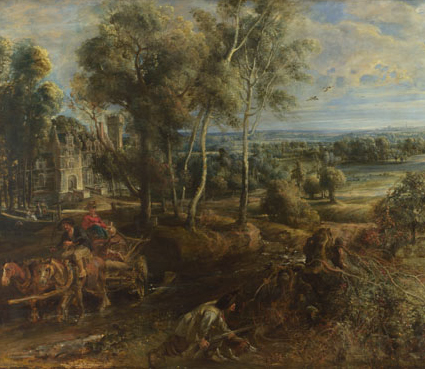Delight, vigour, passion. Rubens's landscape paintings gave expressionto his exuberant love of life. Constable hailed them as his greatest works. But are they really his best pictures or just the pictures the British love best?
In the summer of 1833, while making "a few observations on the history of landscape painting" to the members of the Literary and Scientific Society of Hampstead, John Constable turned his attention to the Flemish artist Peter Paul Rubens. What followed was not so much an appraisal as a declaration of love: "In no other branch of the art is Rubens greater than in landscape - the freshness and dewy light, the joyous and animated character which he has imparted to it, impressing on the level monotonous scenery of Flanders all the richness which belongs to its noblest features. Rubens delighted in phenomena - rainbows upon a stormy sky, bursts of sunshine, moonlight, meteors and impetuous torrents mingling their sound with wind and wave."
Constable concluded by advising the modest audience gathered that day in the Hampstead Assembly Rooms to seek out two of the artist's finest works, namely "a pair of landscapes which came to England from Genoa, one of which is now in the National Gallery".
An Autumn Landscape with a View of Het Steen in the Early Morning, painted by Rubens circa 1636, is still in the National Gallery. It is currently to be found at the centre of a new exhibition in the Sainsbury Wing, "Making and Meaning: Rubens's Landscapes", which is meant, among other things, as an opportunity to test the truth of Constable's assertions. Are Rubens's landscapes really among his greatest works? Or are they just the only paintings in his uvre that the British - so mistrustful of the swagger and flourish that Rubens showed in...

Joy Unconfined
05-11-1996

